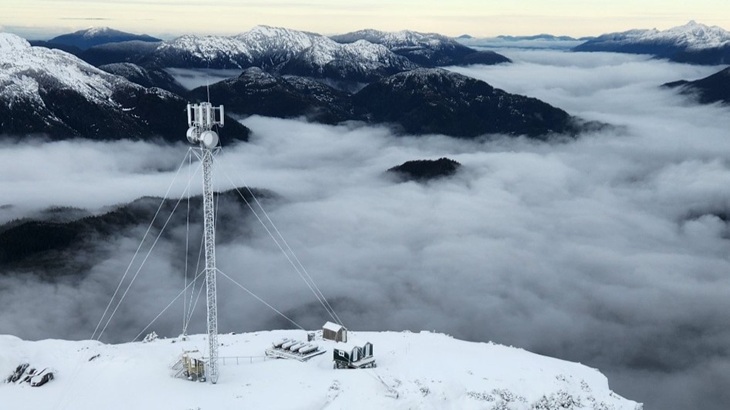
Rogers announced in late December it has turned on five new cellular towers along B.C.’s Highway 16, known as the Highway of Tears, providing additional 911 access for all travellers and 5G wireless coverage for Rogers customers.
This marks the substantial completion of the project, announced in April 2021, with nine out of 11 towers now in service, according to a Rogers press release.
“With nine towers in-service, we are proud to provide 166 kilometres of 5G cellular coverage on Highway 16, closing most of the wireless gap between Prince Rupert and Prince George,” Mark Kennedy, Rogers’s chief technology officer, said in a statement. “We are honoured to work with Indigenous communities and government partners on this generational project to increase safety and improve connectivity in the region for residents and travellers.”
When the project is complete, Rogers will provide 252 kilometres of new cell coverage along Highway 16, closing gaps to ensure continuous coverage along all 720 kilometres of the northern highway corridor, Rogers says.
“This will establish a safer environment for travel and fulfill one of the recommendations in the 2006 Highway of Tears Symposium report to enhance safety for Indigenous women and girls,” the Rogers press release says.
“In 2006, the Highway of Tears Governing Body dreamed of having a communication network between Prince Rupert and Prince George, our vision was simply to build telephone booths along the corridor! We never envisioned that 18 years later, we would be celebrating the substantial completion of the project to provide cell coverage along Highway 16,” said Mary Teegee, a Murdered and Missing Indigenous Women and Girls (MMIWG) activist, in the release. “These are more than just cell towers, they are life lines for the north. I commend Rogers for lighting the way for other corporations to follow along the path to reconciliation.”
The newly built towers are part of an ongoing rural wireless service expansion project partly funded by the province’s Connecting British Columbia program, administered by Northern Development Initiative Trust, and the federal government’s Universal Broadband Fund.
The terrain involved in the Highway 16 project presents significant challenges, with two of the new towers located on top of mountains, accessible by helicopter, Rogers says. This underscores Rogers’s commitment to deliver reliable connectivity to underserved rural, remote and indigenous communities in B.C. and across Canada, the company says.
Rogers says it has invested more than $40 billion in its networks over the last decade and is investing $4 billion in capital investments this year. Its 5G network now reaches more than 2,500 communities across Canada, according to Rogers.
Photo courtesy of Rogers



